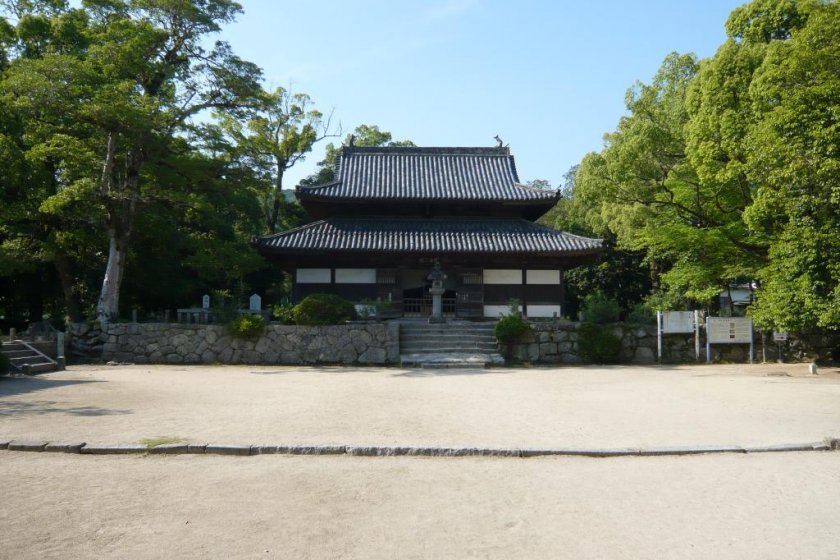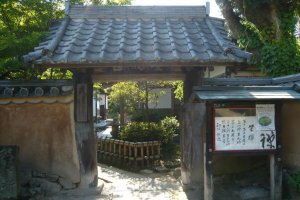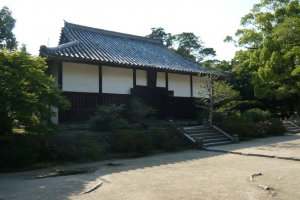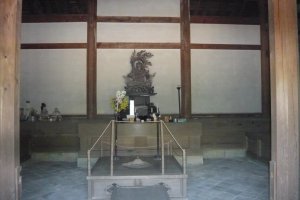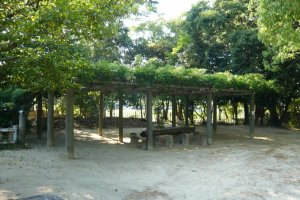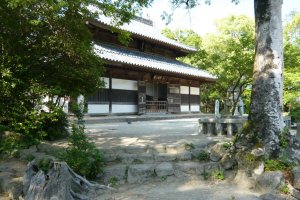Next door to Kaidan-in Temple stands Kanzeon-ji Buddhist Temple. It is no coincidence that this temple is adjacent to Kaidan-in. Kanzeon-ji dates from the seventh century and at one time it was the most important temple on Kyushu Island.
The bell that hangs in the bell tower is one of the oldest in Japan. The sound of the bell is numbered among the 100 soundscapes of Japan as designated by the Ministry of Environment in 1996. The bell is also registered as a National Treasure by the Cultural Ministry.
According to the text of Japan’s second book of history (Shoku Nihongi) Kanzeon-ji was founded by Emperor Tenji in honor of his mother, Empress Saimei. Empress Saimei was the 2nd of eight women to rule Japan as Empress Regents. The Empress was in the process of assisting in the revival of the Paeckche dynasty in Korea and was assembling an army in Tsukushi Province (present day Fukuoka Prefecture) when the Empress’s death negated the planned invasion. During the planning period for the invasion, the Empress stayed in Ishiyu Temporary Palace in Iyo province, today's Dōgo Onsen. The Empress’s tomb is among the Kofun found in Asuka and is identified with the Empress having been interred there.
Although the Buddhist temple was started by Emperor Tenji, it was still incomplete after 50 years. Several hundred workers were assigned to finish the Temple complex. The temple had a south gate, middle gate, golden hall to the west, a pagoda to the east and a lecture hall in the middle. The buildings were ruined through centuries of disasters and wars. The present day Kondo with mokoshi and lecture hall were rebuilt in the Genroku era (the golden age of the Edo period, from 1688 to 1704). The grounds and ruins of Kanzeon-ji were declared an historical site in 1970 by the Ministry of Cultural Affairs.
Kanzeon-ji houses a National Treasure (bell) and a number of statues and other items that are considered important cultural properties including wooden statues of Amida Nyorai, and Kannon from the Heian period and Juchimen Kannon from the Kamakura period.
To walk around the Temple compound is a walk back in time. There are trellises and places to sit and relax and reflect upon the beginnings of Buddhism in Japan as the Japanese people transitioned from a backward culture into an evolving and sophisticated society.
